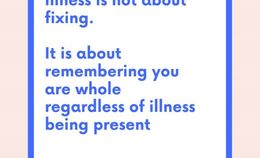The new school year is just starting, and this year’s round of classroom and standardized testing is about to get under way. And with this annual cycle, your student may experience trepidation about what will happen. It is normal and perhaps even healthy for a student to feel some discomfort or uncertainty before a test. Severe test anxiety, however, can be a performance-inhibiting and downright traumatic experience for some students. According to a 2010 study, test anxiety affects between 10-40% of students, and it appears that the higher stakes the test, like taking the SAT or ACT, the greater the anxiety.
So, what are some of the symptoms of test anxiety? If your student experiences any combination of the symptoms below, please visit a health care professional to get more support.
Physical
- sweating
- digestive disturbance/stomach pain
- rapid heartbeat
- shortness of breath
- restlessness/fidgety
- feeling lightheaded or faint
Emotional
- extreme self-doubt
- fear
- stress
- hopelessness
- inadequacy
- anger
The degree or severity of these symptoms is also an indicator of whether or not this is a case of pre-test jitters or something more serious.
Coping strategies
There are several ways to address test anxiety: medical or therapeutic treatment, medication, coaching your student on effective study techniques, self-appraising writing techniques, deep breathing and neurofeedback. The first two interventions would only be done under a physician or psychologist’s supervision, and so we won’t delve into those areas.
Review the material: you can help your student learn material for a test by encouraging a critical thinking mindset when reviewing notes or units for a test. Encourage them to engage one or more of these questions:
- “What were the three most important things we discussed in this unit?”
- “If you only had 10 words to describe this material to a friend, what would you say?”
- “If you were testing someone on this information, what would you expect them to know?”
- If an essay type exam, have your student write and then answer a question they think might be asked on a test.
- If a multiple choice and/or bubble sheet test, show your student different strategies to make educated guesses when answers don’t jump out at them.
Day of test tips: When the big day rolls around, there are a few things you can show your student that can be very helpful
- get a good night's sleep
- eat a high protein, whole grain breakfast like scrambled eggs and whole wheat toast
- before the test, practice deep breathing
- read each question slowly and more than once. Not surprisingly, stress and anxiety make it harder to concentrate, so while your student may feel energized by the stress, they may need to slow down to ensure they understand the question
- if anxiety builds during the test, encourage your student to take a “grounding break” - a quick mental exercise where they take a deep breath, close their eyes and try to feel their feet or another extremity - to bring their awareness back to the present
Last, neurofeedback can be an game changer when dealing with test anxiety in the long term. NeurOptimal® neurofeedback does not require a medical diagnosis or prescription to use, so parents can employ brain training proactively to help your student manage test taking jitters. Furthermore, several studies have shown NeurOptimal®’s promise in reducing anxiety symptoms in college students and improve the quality of sleep.





















